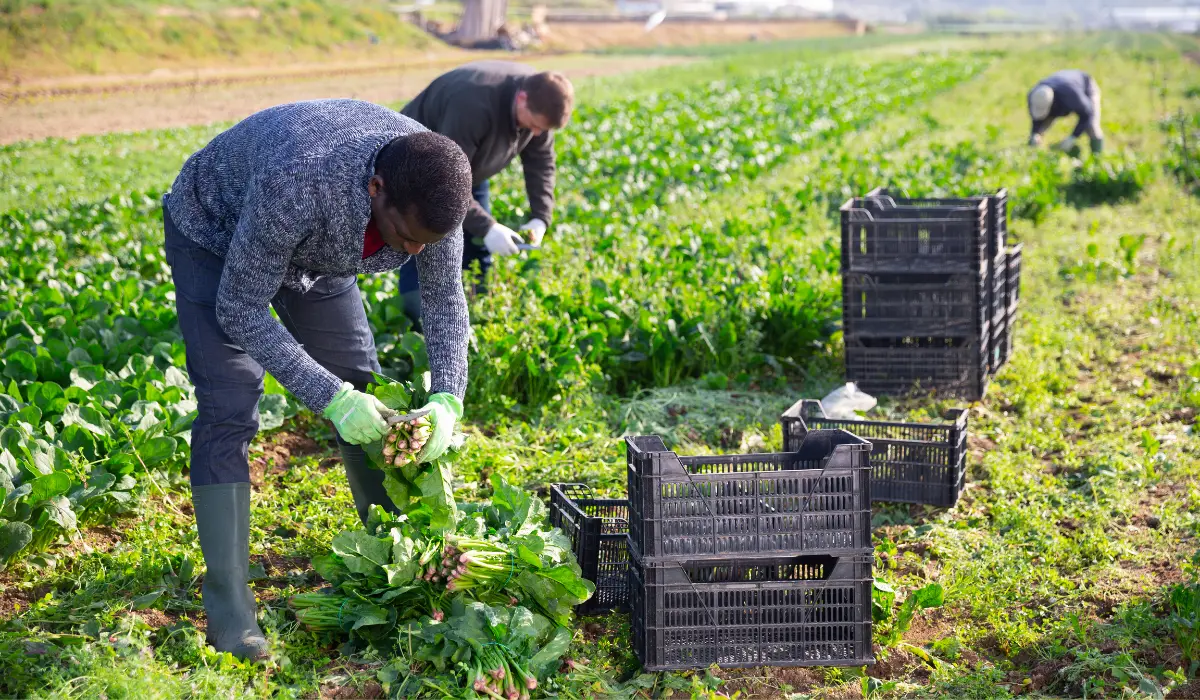For nearly two decades, Ricardo has lived in the shadows of upstate New York’s dairy country. He rises before dawn, tends to cows, and sends his children off to school. Outwardly, he resembles thousands of other agricultural workers powering America’s food system. Privately, however, his reality is shaped by fear. He is undocumented, one of the many immigrants who risk deportation every time they run an errand, drive to work, or accompany their children to the doctor.
Ricardo, whose name has been changed to protect his identity, crossed into the United States 17 years ago after leaving behind his crime-ridden hometown in Mexico. He never expected to stay this long, but the promise of safety and opportunity for his children outweighs the pull of home. His children now enjoy access to schools, healthcare, and security he believes would be impossible back in Mexico. Still, the constant anxiety of being discovered and separated from his family never fades.
“We are only here to work,” Ricardo said quietly. “But every day feels like a risk.”
Immigrant Labor: The Backbone of U.S. Agriculture
Agriculture in the United States relies heavily on immigrant labor, both documented and undocumented. Estimates vary, but the U.S. Department of Agriculture’s Economic Research Service calculates that about 42 percent of hired crop workers lack legal authorization. That’s roughly one million people performing grueling tasks in fields and dairies.
The dairy industry is even more dependent. According to the National Milk Producers Federation, more than half of U.S. dairy workers are immigrants. Farms employing them produce nearly four out of every five gallons of milk sold in America. Economists warn that if this workforce were lost, milk prices could double, adding an estimated $32 billion in costs to the U.S. economy.
Despite this dependence, immigration enforcement has intensified in recent years. Farm owners and workers alike say the climate of fear is altering daily life on and off the fields.
A Journey of Hardship and Permanence
Carlos, another dairy worker who asked to remain anonymous, embodies that shift. He crossed into the U.S. in 2013 after trekking across the Sonoran Desert, enduring detention, deportation, and finally another risky crossing into Texas. What began as a temporary plan to earn money for his family stretched into permanence after he fell in love, married, and had two children.
Carlos said he is treated fairly by his employers, who openly support stricter immigration enforcement, yet he and fellow workers cannot shake the fear of raids. Rumors of detentions ripple through farming communities, prompting many workers to avoid leaving home at night or showing up for early-morning shifts.
“People are scared to even buy groceries,” Carlos admitted. “The fear is everywhere.”
Farmers’ Dilemma: Support for Workers, but Few Legal Options
Farmers themselves acknowledge the contradiction between their political leanings and their workforce realities. A California almond grower, who also requested anonymity, said that while he supports border security, the labor shortage in agriculture leaves him little choice but to hire undocumented workers.
“There aren’t Americans waiting in line to do this work,” he said. “Without immigrant labor, my orchard doesn’t survive.”
He argued that existing visa programs are cumbersome, expensive, and insufficient to meet demand. While he is not fully supportive of permanent residency for farmworkers, he believes streamlined temporary visas would benefit both sides.
Trump’s Pledges and the Uncertainty Ahead
Former President Donald Trump, who has made immigration a centerpiece of his political identity, has sent mixed messages about farm labor. On one hand, he has pledged to protect agricultural workers by proposing programs that would allow easier travel between home countries and U.S. farms. On the other hand, his administration has intensified enforcement through workplace raids and deportations.
The uncertainty leaves workers and farmers alike on edge. For Diego, another Mexican worker employed on a Vermont farm, the unpredictability is especially agonizing. He crossed the border, sought asylum, and now works legally, at least temporarily. Still, his future hinges on an immigration hearing scheduled for 2026.
“I’m afraid every day,” Diego said. “Even those of us who follow the process don’t know what will happen.”
Raids and Community Impact
Immigration raids have amplified fear in immigrant-heavy farming regions. Jose Lopez, interim director of the Food Chain Workers Alliance, said large-scale raids in Southern California this summer upended entire communities. In one instance, more than 300 immigrant workers were arrested during coordinated raids on cannabis farms, with one person dying in custody. Weeks later, another 800 people were detained across multiple operations.
Lopez described chaotic scenes of family members frantically searching for loved ones with no information about where detainees had been taken. Businesses serving Hispanic communities have since shuttered, and families now avoid seeking medical care, renewing licenses, or even leaving their homes.
“This is tearing communities apart,” Lopez said. “People are afraid to exist in public.”
Conditions in detention centers also raise alarm. Accounts describe meager food served at odd hours, inadequate medical access, and crowded facilities. For many immigrants, these reports reinforce the belief that even attempting legal pathways offers no real protection.
The Crime Narrative and Misconceptions
Part of the political justification for tougher immigration measures has been the assertion that immigrants, particularly those without documentation, pose a heightened security risk. Yet recent research undermines that claim.
A 2024 study by a Stanford University economist found that immigrants are 60 percent less likely to be incarcerated than U.S.-born citizens. Another National Institute of Justice report reviewing criminal offenses in Texas concluded that undocumented immigrants committed fewer crimes than both native-born Americans and legal immigrants.
Ricardo said accusations that immigrants are “taking jobs” or “bringing crime” ignore the reality of farm life. He has seen American-born workers try farm jobs but rarely stay due to the physical demands and low pay. “If people think we are bad,” he said, “they should come see the work we do.”
The Broader Consequences
Beyond individual hardship, the agricultural labor crisis poses broader questions about America’s food supply. With immigrant workers central to dairy, fruit, and vegetable production, disruptions ripple through the economy and directly affect consumers. Higher grocery prices, reduced availability of fresh produce, and strained rural economies are all potential outcomes of aggressive enforcement.
Farmers and advocacy groups argue that the U.S. must confront the contradiction of relying heavily on undocumented workers while simultaneously criminalizing them. Current visa programs, such as the H-2A temporary agricultural worker program, are considered too slow, bureaucratic, and expensive to meet the demands of a $1 trillion food and agriculture industry.
Families in Limbo
For workers like Ricardo, Carlos, and Diego, the debate is not about statistics but about family survival. Many send a large portion of their earnings back to relatives in Mexico and Central America while trying to raise children in the U.S. under constant threat of separation.
Every trip to the grocery store, every doctor’s appointment, carries the risk of exposure. As raids increase, so too does the psychological toll. “Nobody wants to be hidden all the time,” Carlos said. “But what choice do we have?”
A System at a Breaking Point
Critics like Lopez argue that the U.S. immigration system is fundamentally broken. Promises of “getting in line” for legal entry, he said, are meaningless when the line does not truly exist. The mismatch between agricultural labor needs and immigration policy has created an untenable situation, where workers live in fear and farmers live in denial.
“The whole system is imaginary,” Lopez said. “People say there’s a back of the line. But that line doesn’t exist.”
The Road Ahead
As the U.S. grapples with immigration reform, farmworkers remain caught in the crossfire of political battles. For many, the “American dream” has meant a steady paycheck and safer lives for their children, but at the cost of living invisibly and under constant threat.
Whether policymakers create new pathways for legal farm labor or double down on enforcement will determine not just the lives of workers, but also the stability of the nation’s food system. For Ricardo, however, the calculation remains painfully simple:
“It’s not about politics for me,” he said. “It’s about protecting my kids.”




